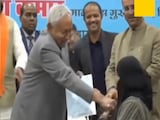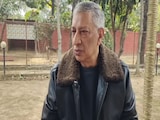More than 240 pilgrims have died this year due to health-related issues during the Chardham pilgrimage in Uttarakhand, with the fatality rate being the highest among devotees visiting the Himalayan temples by helicopter.
The Yatra this year has reached its fag end with Kedarnath, Gangotri and Yamunotri already closed for the winter and Badrinath scheduled to close on November 17.
High altitude sickness, oxygen deficiency and cardiac arrest are the most common reasons behind the deaths of pilgrims.
According to data released by the State Emergency Operation Centre here, a total of 246 deaths have occurred so far during the Chardham yatra this year out of which 65 died in Badrinath, 115 in Kedarnath, 16 in Gangotri and 40 in Yamunotri besides 10 at the Sikh shrine of Hemkund Sahib.
There has been a slight increase in the number of deaths of pilgrims due to health reasons this year as the figure last year stood at 242, the Uttarakhand State Disaster Management Authority (USDMA) said.
Pilgrims die due to health factors every year during the Chardham yatra but the number of such deaths has gone up in recent years.
The death rate is the highest among yatris who reach the high altitude temples in helicopters as they directly come into contact with the harsh weather conditions at those heights without going through an acclimatisation process, CEO of Six Sigma Dr Pradeep Bhardwaj said.
Six Sigma is a medical firm that has been providing medical services to yatris in Kedarnath for the last nine years.
Reaching the temples located above 3000 metres by air within minutes of starting from lower areas exposes the pilgrims all of a sudden to temperatures they are not accustomed to, he said.
So, acclimatisation before exposure to this kind of harsh weather is necessary, the Six Sigma CEO said.
Most Chardham sites including Kedarnath, Badrinath and Yamunotri, are located at high altitudes, where oxygen levels are low. This can lead to altitude sickness, which if not managed promptly, can be fatal, he said.
''The terrain is difficult and the climate harsh. Pilgrims have to traverse rugged mountainous terrain through narrow and steep routes that are prone to landslides or other environmental hazards, making travel physically challenging and hazardous. Harsh weather, including sudden drops in temperature, rain, and snow, further complicates the journey," Bhardwaj said.
How well or badly the pilgrims cope with the challenges along the way depends on their fitness level, he said.
Overcrowding of yatris and limited infrastructure is another reason for the rising number of deaths.
The Char Dham Yatra attracts millions of pilgrims each year, creating congestion on the trails, at accommodations and in medical facilities. This crowding can limit access to timely medical assistance and emergency services in case of illness or injury, Bhardwaj said.
Many pilgrims are elderly and may have preexisting health conditions, such as cardiovascular issues, diabetes, or respiratory problems. The physical exertion, combined with high altitude and lack of oxygen, can exacerbate these conditions, leading to health emergencies or fatalities, he said.
Despite improvements, medical facilities along the Chardham route can still be sparse and underresourced, particularly in remote areas. Emergency response may be slow due to the terrain, and facilities may lack specialized equipment or staff to handle severe health crises, he said.
The journey is physically demanding, with long distances and sometimes strenuous hiking. Pilgrims may underestimate the physical toll, leading to exhaustion and dehydration, which can be dangerous, particularly in high-altitude conditions.
The mountainous terrain is prone to natural disasters, including landslides and flash floods, especially during the monsoon season. Such events can result in injuries or deaths among pilgrims and add significant risk to the journey.
Government Authorities must increase the availability of medical facilities through NGOs providing information on high altitude sickness, and advising pilgrims to undergo health checks before starting the journey, he suggested.
Additionally, the government must put daily limits on the number of visitors to certain sites to reduce crowding besides making a first aid kit and health check before registration compulsory for the pilgrims.
(Except for the headline, this story has not been edited by NDTV staff and is published from a syndicated feed.)















